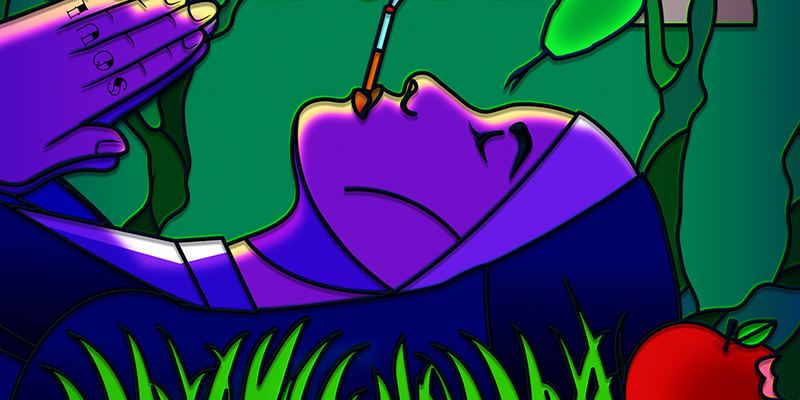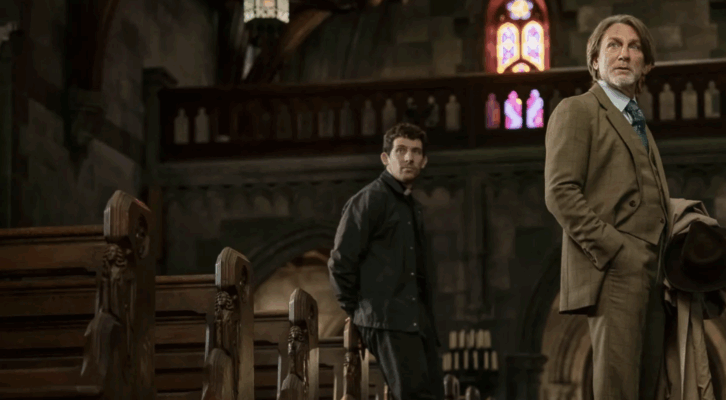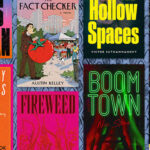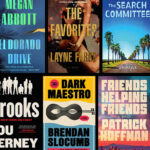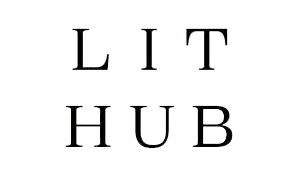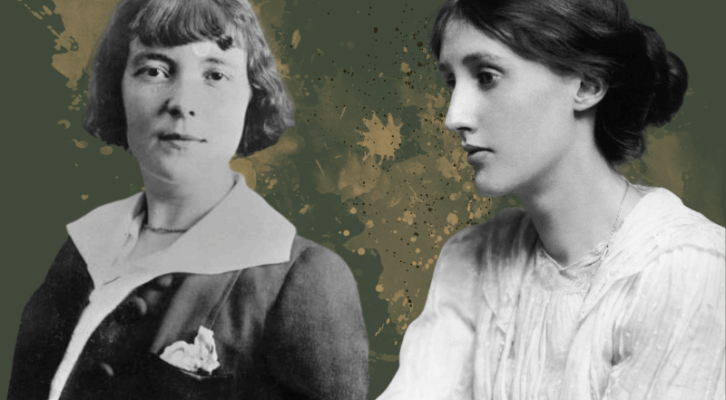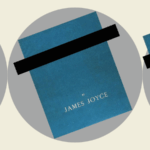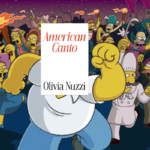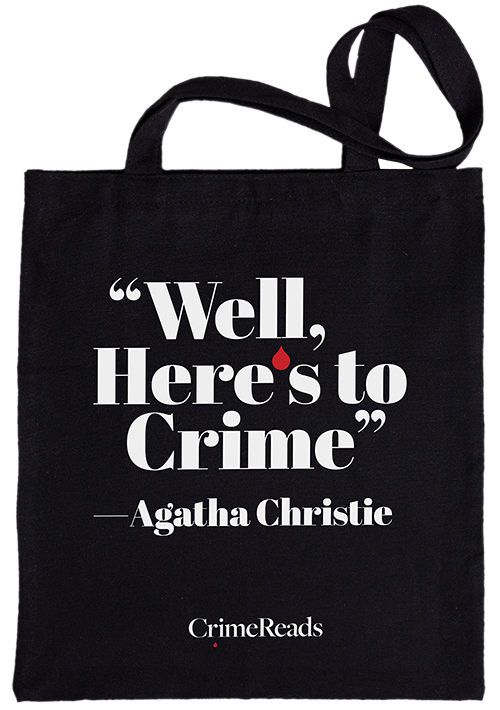I know, the series is only three books in (and that’s if we count the upcoming installment), but I’m already batting hard for Sister Holiday as one of the most startlingly original protagonists of the century. Margot Douaihy is just as cool as her protagonist, and let me ask a few questions about the series and its characters as we reveal the cover design for the next installment in the series, Divine Ruin, to be published in January 2026.
Molly Odintz: Your series has received quite the reception – why do you think a chain-smoking nun detective has resonated so strongly with audiences?
Margot Douaihy: Thanks for saying that. I hope Sister Holiday resonates because she is a character who feels like someone you know, even if you’ve never met her in the real world. Which means she’s messy, determined, sometimes unhinged, and haunted. Sister Holiday is a true believer. She has addiction issues. She beats up a student and swallows rosary beads and has covered herself in tattoos which she then has to conceal to stay in the convent. For a sleuth, Sister Holiday is, in many ways, a mystery to herself.
And I know that a foul-mouthed, gold-toothed lesbian nun sleuth is not going to appeal to everyone, but her questions are humanity’s questions: Who am I? How can I live a life of meaning? Women are rarely “given permission” to be as messy as men. It was important for me to write a female character who was selfless and ruthless, who broke rules and broke conventions, who makes sense to no one except herself. Her PI work and her permanent vows as a Sister of the Sublime Blood are two pillars of the same gate, an extreme path to duty and service. A way to dedicate her life to solvable riddles (cases) and the divine mysteries that can never be answered. Sister Holiday prays, she ministers to the hungry and lost. She uses her rosary as brassknuckles. She loves coffee. She f*cks things up that need to be smashed. A hardboiled nun.
Crafting these mysteries, I’m pretty sure I break all but two of Elmore Leonard’s “rules of writing.” (I adore Leonard’s work, but rules aren’t really my thing.) I try to center raw viscerality, emotional connection, voice, and tone. I hope to keep these mysteries weird and surprising, with tons of twists and swerves in tightly plotted, pacy whodunits and whydunits.
MO: Sister Holiday is a character who continuously evolves, in the story and through her own life choices. What did you want to explore about personal journeys and the vast changes that people make over their lives?
MD: Her life choices reflect her deep compassion and her contradictions. She is volatile, vulnerable, genuinely devout, iconoclastic, obsessive, the brutalizer and brutalized, and (hopefully) consumptive. She shows us that religion can be many things. No dude up at an altar “owns” your religion. No one can legislate your faith or your soul. I hope Sister Holiday’s journey vivifies this. Faith can be a shelter, a structure, a social technology. A tool of oppression or liberation. Just like media itself. Blink twice if you know anyone who’s weaponized religion to make bank. An amoral grifter pre$ident is selling his own branded Bibles. Are you kidding me? So, yeah, I hope Sister Holiday’s evolution is a counter-argument to that ancient BS. In her arc, her choice to become a nun has become a life raft and a cage. I know there are a lot of capital O Opinions about crime novels and state-of-the-nation polemics. But I will triple down on my belief that mysteries are exquisite forms of social comment. I could list hundreds of illustrative examples, but just start with Razorblade Tears by SA Cosby, Beware the Woman by Megan Abbott, anything by Sara Paretsky, and Red Harvest by Dashielle Hammett. (Hammett spent months in prison to protect political freedom.) I’m not too thrilled about letting hegemony tyrannize art processes.
MO: New Orleans is as much a character as it is a setting for you. What did you want to capture about the city in your writing? What makes NOLA so inspiring to artists?
MD: More than a decade ago, when I was living in New Orleans, I realized it would be the ideal setting for a mystery centered on an unconventional, punk-yet-pious nun. NOLA is a place of extremes and of extreme subtlety. It’s a city of ferocious innovation, masquerade, mutual aid, the birthplace of jazz and so much art. And it’s also regular, American, quotidian, challenging. A myth that is real. Many spiritual traditions are represented. It’s an incubator. Maybe the heat is the incubator. It’s also battered by Acts of God: hurricanes and floods.
I (masochistically) like the heat. That thick humidity feels seductive to me, like a drug, like a thundercoat. In the series, weather brings a temporal tension too, slowing some characters down, serving as ticking clocks of time-pressure, and pushing others characters into agitation. I’ve said this about the city a lot, but it remains true for me: New Orleans is a place of miracles and curses.
Interview continues below cover reveal.

MO: Without giving anything away, can you give us a little teaser for the new book? What’s a fun Easter egg to hunt for in the upcoming novel?
MD: Garden of Eden noir, baby. I leaned harder into noir with this one. Divine Ruin’s got plenty of sinkholes, descents, abysses, and double-crosses. Sister Holiday has to go undercover to infiltrate a drug ring targeting her school. The meta and metabolized narratives center the questions at the heart of noir: Who can you trust? Can you even trust yourself?
Some teasers…whereas Scorched Grace is elementally about fire and incineration, and Blessed Water is tears, bloodshed, and floods, Divine Ruin plays in the earth and abyss, the dreamlogic of the night garden, decay, disguise. All things lusciously dark. I wrote Divine Ruin to be as restless and steamy as Sister Holiday is, full of furtive, hectic power. The addiction narrative is a primary heartbeat of this mystery. Why are we so addicted, so prone to addiction (in its many forms)? I have a personal connection to addiction, and I poured my questions into the book.
Regarding the investigative plot line of Divine Ruin, I didn’t lock into the final plot until the third draft, with the collaboration of Lexy Cassola, my brilliant editor at Gillian Flynn Books/Zando. I am obsessed with plot. Clue engineering is magic. Sleight of hand. But I started my writing life as a poet, and I need space to build strangeness and experimentation into each line. When I begin a novel, I lead with character, voice, moods, and themes, then I work backwards and build a plot to meet the mood. So it takes at least three drafts and a lot of coffee and headbanging and shaking fists at the sky to get it right.
I want to keep queering the hardboiled project, too, so I play with the wisecracking, hard-living, hard-drinking lone-wolf tropes. Sister Holiday, like the canonical sleuths, acknowledges that the world is very broken, but it’s still worth fighting for. I love the Black Mask origins and authors like Himes, Hammett, and Chandler who write what I consider to be poetic realism.
MO: Who’s your favorite secondary character to write so far in the series?
MD: Maggie Riveaux, Moose Walsh, Prince Dempsey, BonTon, Rosemary Flynn. That’s not a real answer. Sorry. But it’s the start of my answer(?) I love every secondary character in the series, and I hope they feel contoured and complex enough to have their own spin off series. At the recent New Orleans Tennessee Williams Festival, Megan Abbott suggested a great exercise: writing for 20 minutes in the POV of a secondary character. I love that advice and I practice it. Every downstream character is a main character in their own mind, the same way every hero can also be a villain, depending on who’s reading and what they bring to a text.
I see the four mysteries of this series as a found-family meganarrative. The sisterhood of the convent and Holiday’s band back in Brooklyn. And how a gay brother and lesbian sister duo can rebuild a sibling bond in a new city. But Maggie Riveaux is crucial. She is a main character in her own right, she’s an avatar for the reader, and she offers a counter-narrative to Sister Holiday’s impulsive, hot-tempered responses. They share a lot too. They’re both obsessive and flawed. There aren’t too many “purely good” characters in this series. In noir, as I read it, every character is compromised or fallen in some way. Riveaux fell off a ladder and damaged her body in the line of duty. This symbolic understanding of Riveaux, the price she paid and will pay, and her role as head of the Redemption Private Eye Agency are essential. She’s also hilarious—really great company.
MO: Do you have a long-term plan for Sister Holiday’s character trajectory? Or do you want her to keep surprising you as you go?
MD: Just when I think I’ve got her figured out, she dashes off. She’s always four steps ahead of me. I know where she’s going in the final installment (book four), but she keeps surprising me. I never in a billion years would have thought that in Divine Ruin she would [REDACTED/spoiler]. She’s so fun and so frustrating to write. A Chuck E. Cheese ball-pit of existential curiosity, sharp edges, Bikini Kill lyrics, liberation theology, M-80 anarchy, carnal desire, grief, and queer futurity.

